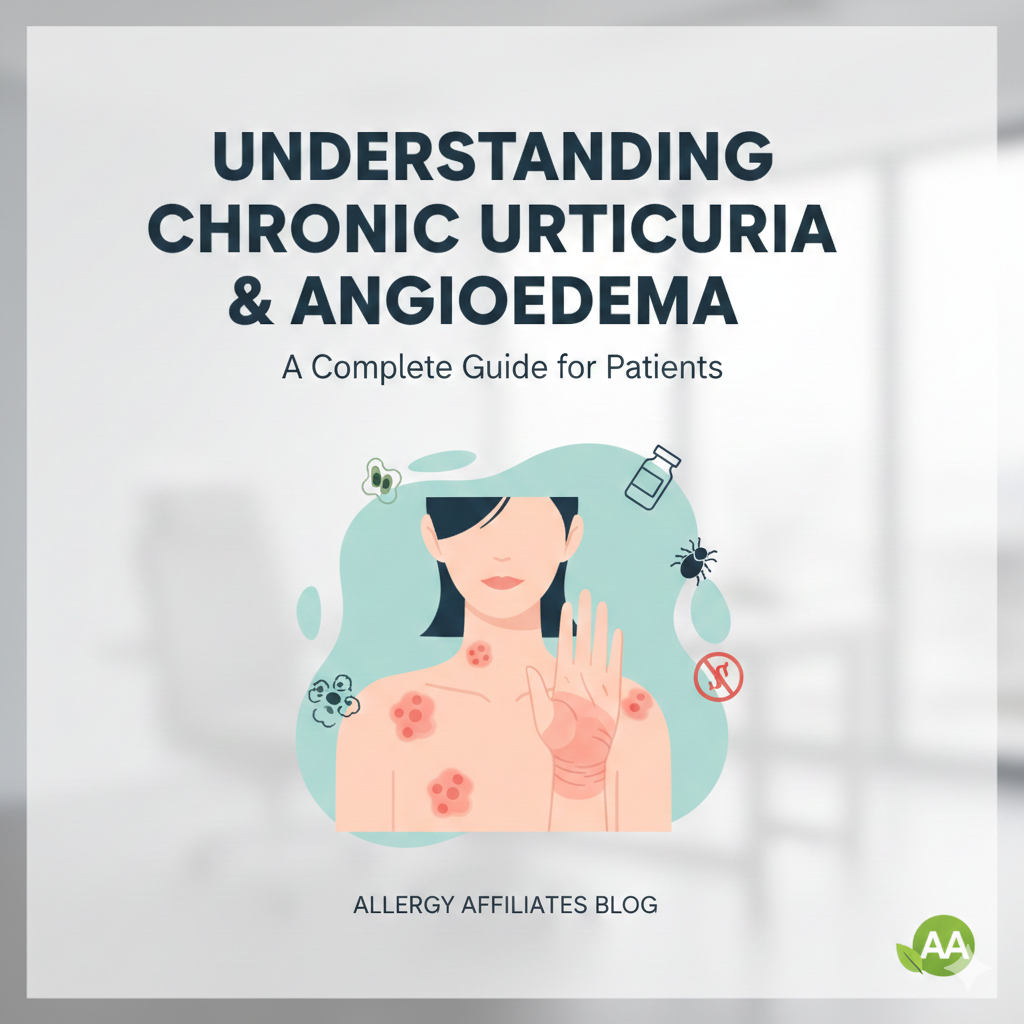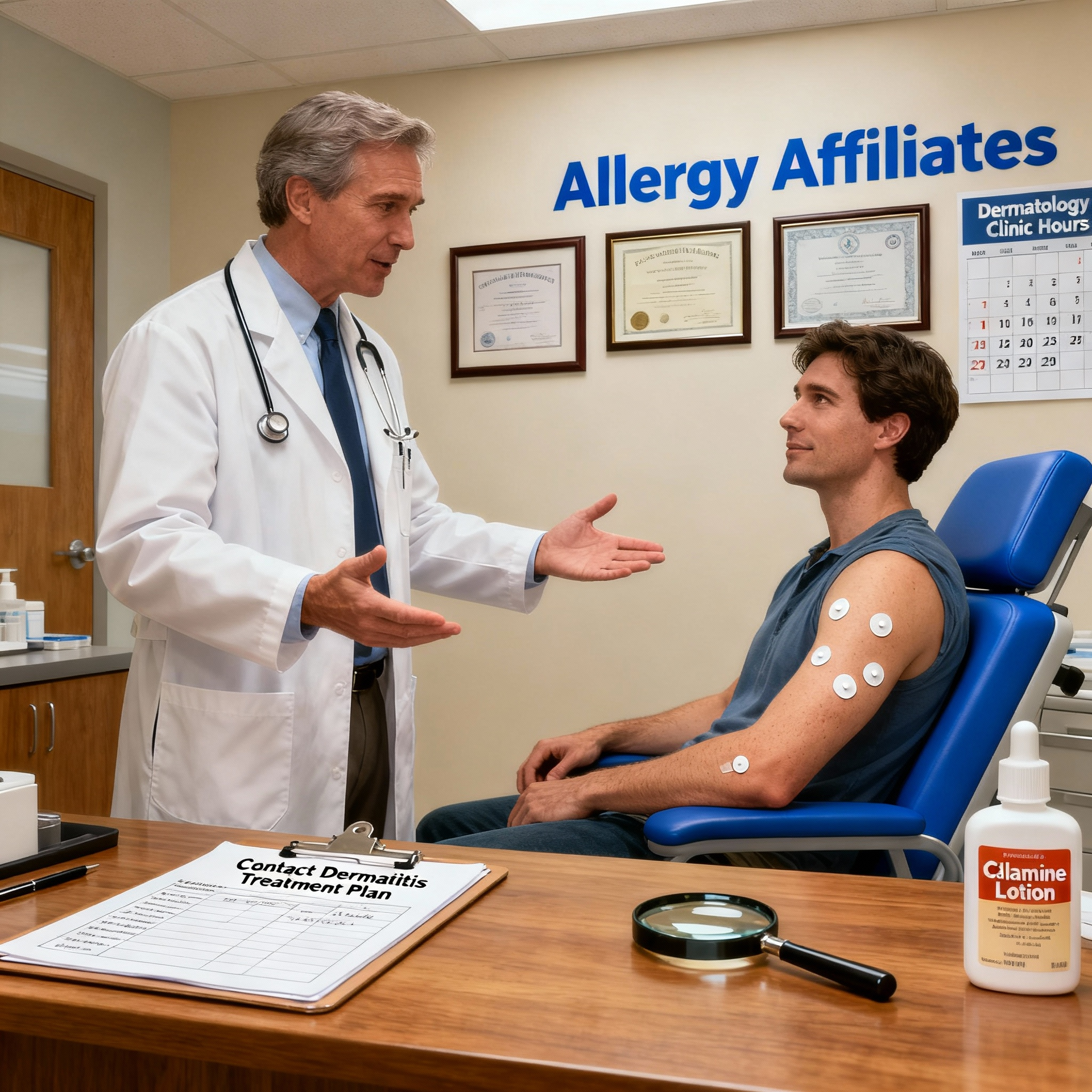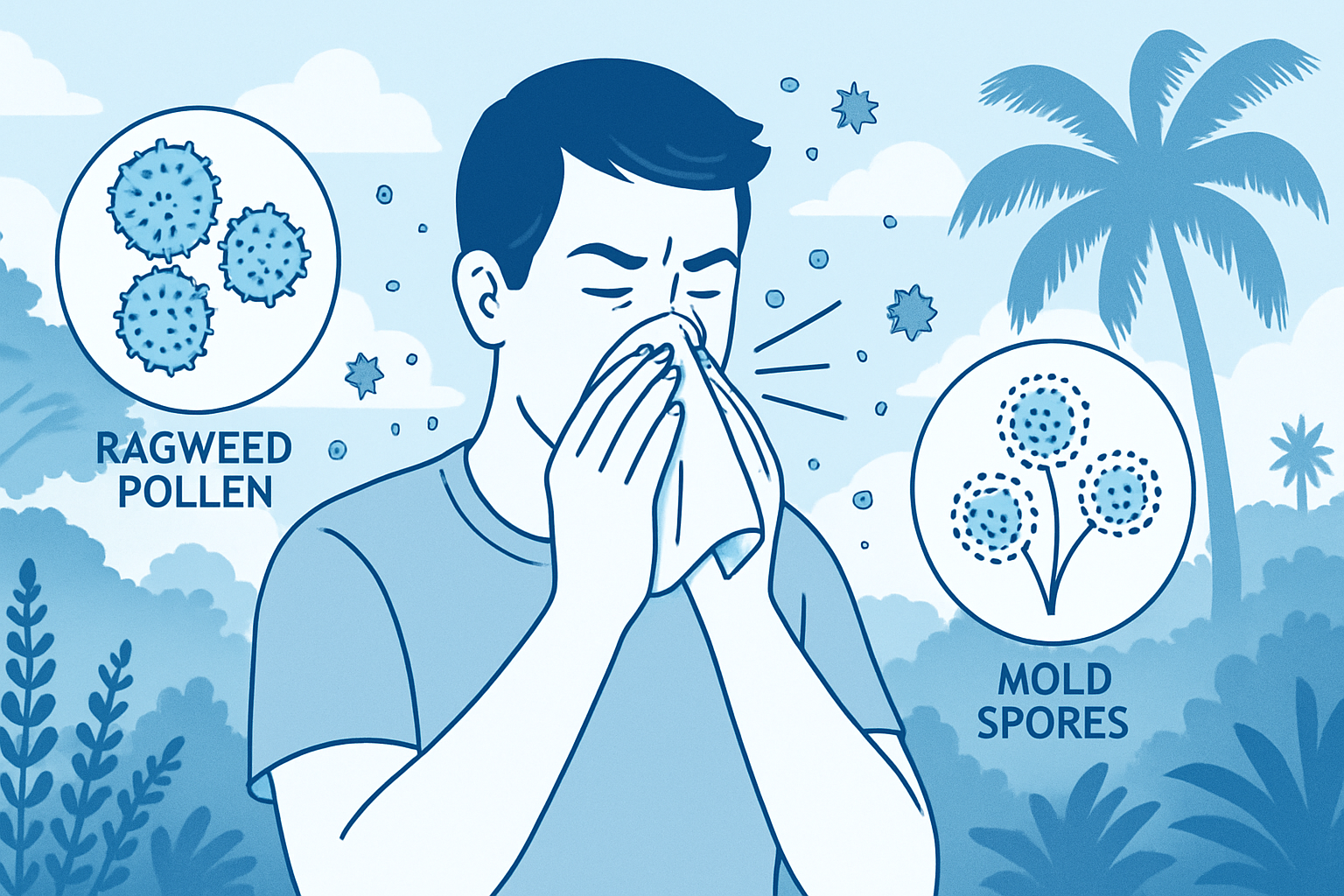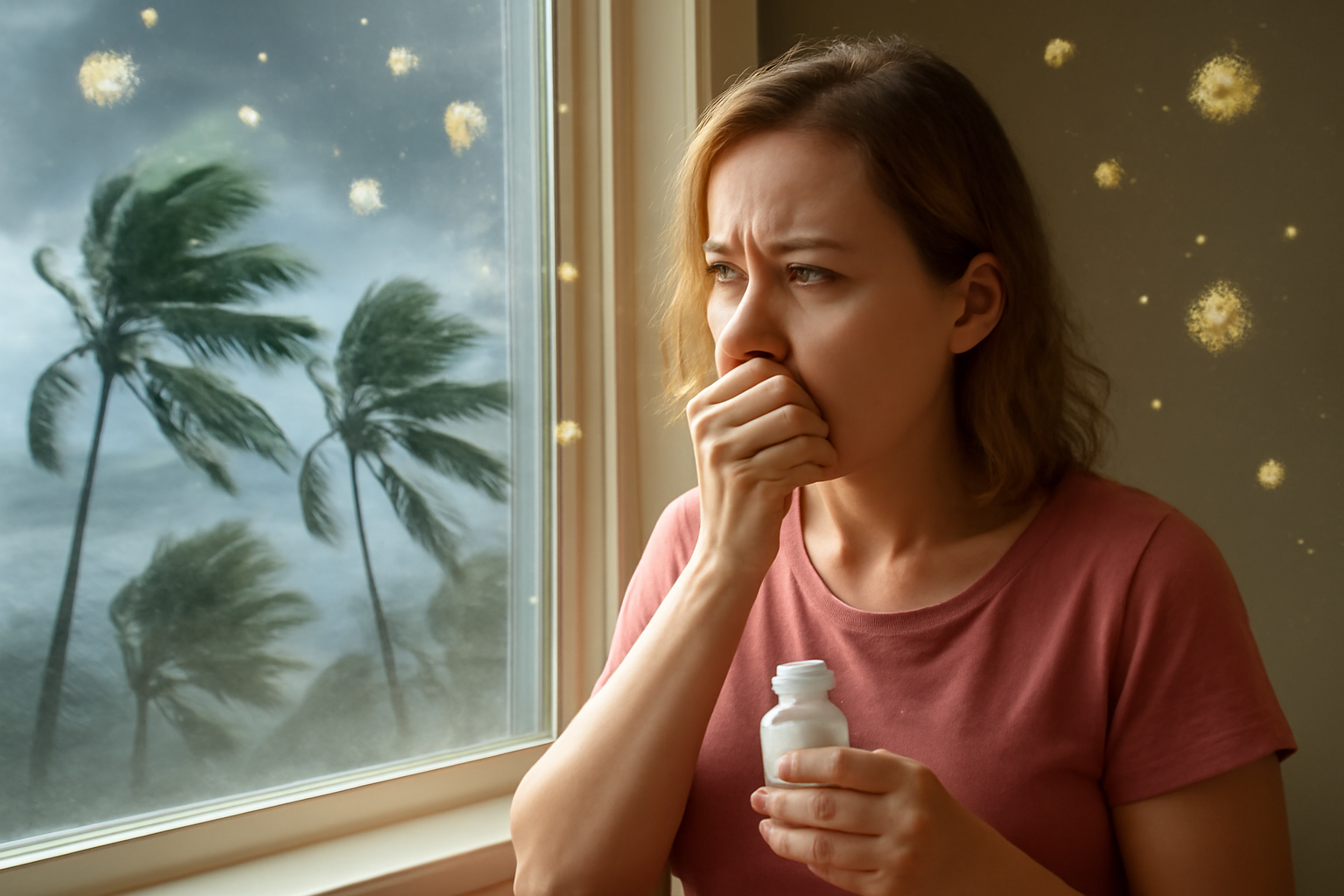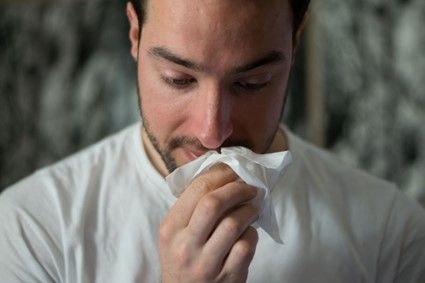
Many people associate allergies with sneezing, itchy eyes, or a runny nose. But for some, the reaction goes deeper—literally. If you’ve ever felt tightness in your chest, difficulty breathing, or an unexplained shortness of breath, your allergies might be the cause.
At Allergy Affiliates, we regularly see patients who are surprised to learn that their breathing issues are allergy-related. In this post, we’ll explore how allergies can affect your lungs, how to tell the difference between allergy-induced breathing issues and asthma, and what you can do to manage it.
How Do Allergies Affect Breathing?
When you're exposed to allergens like pollen, dust mites, mold, or pet dander, your immune system reacts. For some, this response triggers inflammation in the nasal passages, but for others, it can extend into the bronchial tubes—the airways that lead to your lungs.
This inflammation narrows your airways, making it harder to breathe. The result? Shortness of breath, wheezing, and chest tightness, even if you don’t have asthma.
Common Allergy Triggers That Impact Breathing
Some allergens are more likely to cause respiratory symptoms, especially when exposure is frequent. These include:
- Pollen (trees, grasses, weeds)
- Dust mites
- Mold spores
- Pet dander
- Cockroach droppings
Allergy-Induced Shortness of Breath vs. Asthma
One of the most common questions we hear is: “Do I have asthma, or is it just allergies?” The two are closely related, but not always the same.
Allergy-Related Dyspnea:
- Happens after direct allergen exposure
- May include nasal congestion, sneezing, watery eyes
- Improves when allergen is removed
- Often seasonal or environmental
Asthma:
- Chronic condition with inflamed, sensitive airways
- Triggers include allergens, cold air, exercise, or stress
- Includes frequent wheezing, tight chest, and coughing at night
- Requires long-term management
How to Treat Allergy-Related Shortness of Breath
If your breathing issues are related to allergies, you don’t have to suffer. There are several effective treatment options available:
- Antihistamines
- Nasal corticosteroids
- Inhalers
- Decongestants
- Allergy testing
- Immunotherapy (allergy shots or drops)
Tips to Reduce Allergy Exposure at Home
Prevention is a powerful tool in reducing symptoms. Try these tips:
- Keep windows closed during high pollen days
- Use HEPA filters
- Wash bedding weekly in hot water
- Use a dehumidifier
- Keep pets out of the bedroom
When to See an Allergist
If you experience repeated shortness of breath, wheezing, or chest tightness, especially during allergy season or after being around pets or dust, it’s time to consult a specialist.
Our board-certified allergists at Allergy Affiliates in Bradenton and Sarasota, FL, can help identify your triggers, provide testing, and offer a personalized treatment plan.
Take a Breath — We’ve Got You
Don’t let allergies control your lungs. Whether it’s shortness of breath, allergic asthma, or seasonal breathing issues, Allergy Affiliates is here to help.
Schedule an appointment today to start your journey toward clearer, easier breathing.
The Link Between Inflammation and Breathing Difficulty
When your body comes into contact with an allergen, it produces antibodies known as Immunoglobulin E (IgE). These antibodies trigger the release of chemicals like histamine, which cause inflammation in the airways, sinuses, and even the skin. This immune response is what leads to swelling in the respiratory tract, making it harder for air to flow freely in and out of your lungs.
This inflammation doesn't just affect the nose and throat; it can impact the lower respiratory tract as well. When the bronchi—the passageways to your lungs—become inflamed, it reduces airflow and makes each breath feel like a struggle. People often describe this sensation as 'air hunger' or a feeling that they can't catch their breath.
Why Some People Are More Sensitive
Not everyone with allergies will experience shortness of breath. Genetics, immune system sensitivity, and even other health conditions can play a role. People who already have conditions like asthma, chronic sinusitis, or chronic obstructive pulmonary disease (COPD) are more likely to notice respiratory symptoms when exposed to allergens.
Additionally, individuals who live in high-pollen regions, damp climates, or homes with poor air filtration may be exposed to allergens more frequently, which can intensify symptoms over time.
The Role of Environmental Allergies
Environmental allergies are particularly notorious for causing respiratory symptoms. For instance, pollen levels can soar during certain seasons, triggering allergic reactions in the lungs for those with hay fever. Mold spores can thrive in humid environments, and without proper ventilation, can linger indoors for extended periods. Dust mites are microscopic but ubiquitous in bedding, upholstery, and carpets, and pet dander can linger long after the pet has left the room.
These allergens often go unnoticed until they cause symptoms like coughing, wheezing, or shortness of breath. That’s why a proactive approach—like regular cleaning, allergen-proof bedding, and using air purifiers—is essential to reducing exposure.
What to Expect During Your Allergy Evaluation
If you come to Allergy Affiliates for breathing problems suspected to be allergy-related, we start with a detailed health history and symptom review. We’ll ask questions about your exposure to pets, mold, dust, and pollen, as well as the timing, duration, and intensity of your symptoms.
Next, we may recommend skin testing or blood tests to identify specific allergens. Skin tests involve placing small amounts of suspected allergens on your skin and observing for reactions. These tests are fast, accurate, and usually well-tolerated.
For breathing assessments, we may use spirometry to measure your lung function. This simple breathing test can help determine whether asthma is playing a role in your symptoms.
Customizing Your Treatment Plan
Once we’ve identified the allergens affecting you, we’ll work together to create a tailored treatment plan. For some patients, managing shortness of breath may involve medications like antihistamines, nasal sprays, or bronchodilators. Others may benefit from immunotherapy—either allergy shots or sublingual drops—that helps your body build tolerance over time.
We also educate you on lifestyle strategies to reduce exposure. For instance, if you’re allergic to dust mites, we might recommend using allergen-proof pillowcases and mattress covers, washing bedding in hot water weekly, and reducing carpeting in your home. If pollen is a trigger, tracking local pollen counts and staying indoors on high-count days can make a significant difference.
Final Thoughts: Don’t Ignore Your Symptoms
Shortness of breath may seem like a minor annoyance, especially if it comes and goes with the seasons, but it can be a sign of an underlying allergic condition that needs attention. Ignoring these symptoms can lead to chronic inflammation, fatigue, poor sleep, and even an increased risk of respiratory infections.
At Allergy Affiliates, we’re committed to helping you breathe better—because quality of life starts with quality breathing. Whether your symptoms are mild or severe, occasional or chronic, we’re here to guide you every step of the way.
Your breath matters. Let’s protect it together.

